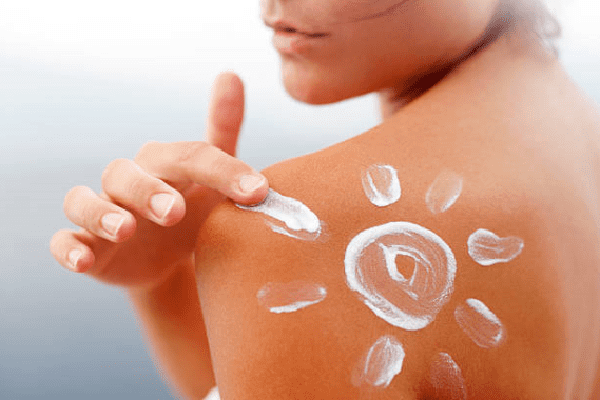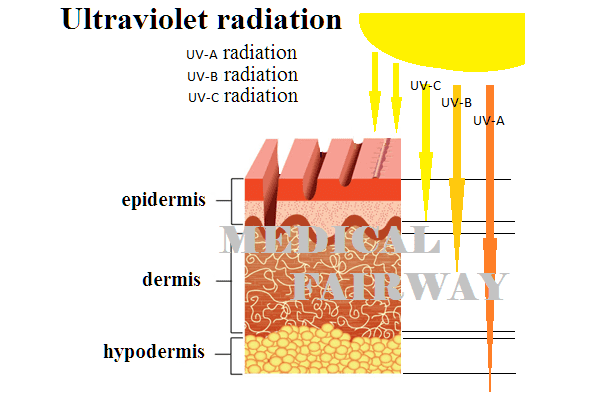Rest turned into disease >>>> The sun's rays can be dangerous!
The sun's rays can be dangerous!

Sunlight plays a very difficult and vital role in wildlife! One can even say that it is the sunlight that living nature owes its existence. For plants and primitive microorganisms, the sun's rays regulate all vital processes - the metabolism of nutrients, growth and reproduction. For many small organisms, prolonged absence of sunlight means death. The human body is at a stage of evolution that allows it to survive in an almost complete absence of sunlight, replacing it, for example, with candles and electric lighting devices. But artificial lighting does not replace the work of sunlight for the synthesis of vitamin D, the production of serotonin, regulation of the activity of the enzyme lysozyme, coenzymes, activation of the complement system, etc. Of course, humanity in this case also managed to get out and came up with ultraviolet radiation lamps, but it turned out that from the entire spectrum of energy sent to us by the Sun (infrared radiation, ultraviolet radiation, visible light) such “safe ultraviolet rays "were also dangerous. What is dangerous in solar ultraviolet radiation, which, in general, is necessary for the human body for many metabolic processes?
It's all about the wavelength! But not the wave that appears on the surface of a large reservoir, but an electromagnetic wave that moves photons. This is how scientists consider rays of light: in the form of a stream of photons. The UV flux is not uniform. It includes:
- UV-A - ultraviolet-A, having a wavelength of 315-400 nm;
- UV-B - ultraviolet-B, having a wavelength of 280-315 nm;
- UV-C - ultraviolet-C, having a wavelength of 100-280 nm.

These types of ultraviolet radiation differ from each other in penetrating ability and biological activity in relation to the cells of living nature. UV-A has the highest degree of penetration, which is why it is dangerous for the body, since its biological effect is much broader and affects the structures of the body that are important for life support (macrophages, lymphocytes, blood vessels, collagen and elastan fibers, fibronectin, glucoaminoglycans). UV-A is not retained by the ozone layer, penetrates through glass, the stratum corneum of the skin, and is to a small extent retained by melanin.
UV-B is largely absorbed by the ozone layer, practically does not have the ability to penetrate glass, is almost completely retained by the stratum corneum and penetrates only 10 percent into the dermis layer, but it is UV-B that can cause skin inflammation during sunburn and stimulate the production of melanin.
UV-C is absorbed by the ozone layer, but when artificial UV radiation is used, it is completely retained by the epidermis.
The all-pervading flow of ultraviolet radiation passes through the protective layers of the skin, reaches the cells of the body that are most vulnerable to it, and changes the structure of DNA, creating cell mutations. At the dawn of life, this ability of the sun's rays, according to scientists, provided a variety of species of living nature, but the human body, from the point of view of the cellular structure, is an established system that does not need to modify cells, for this reason, nature came up with a natural filter that delays penetration ultraviolet radiation to a great depth - a tan (or rather, a layer of pigment produced by skin cells - melanocytes).
But no matter what protective mechanisms nature comes up with for the body, a person manages to bypass them. In order for the mechanism of melanin formation to start, a minimal superficial sunburn of skin cells is required, which is regarded as a signal for the work of melanocytes and the synthesis of melanin. But protective creams have been invented that prevent burns (that is, they prevent the penetration of UV-B rays, but not UV-A rays).
According to the results of the latest developments by scientists, the tan layer (as well as the sunscreen layer) is now considered not as irresistible to UV-A rays as previously thought.
UV-A rays do not cause burns, do not provoke thickening of the epidermis during tanning, but they are responsible for photoaging and UV-carcinogenesis (they damage DNA chains), disrupt the work of lymphocytes, disrupt the antigen-recognition abilities of Langerhans cells (migrating dendritic cells - participants in cellular immunity).
The results of excessive exposure to the sun will not be long in coming and will appear in the form:
- Solar erythema (skin burn) or solar allergy (photodermatosis),
- Photoaging of the skin,
- Suppression of the work of agents of the immune system,
- Activation of certain viral infections (for example, herpes infection, human papillomavirus ),
- An increase in the number of moles (nevi),
- Skin cancer (melanoma, basalioma, carcinoma) or precancerous skin conditions,
- Malignancy of inactive tumors (adenoma, myoma, fibroma, lipoma, osteoma, lymphoma, neuroma and others) and as a result: breast cancer, endometrial cancer, ovarian cancer, prostate cancer, bowel cancer, etc.
Prevention of negative solar effects on the human body gives its positive results, but for this it is necessary to adhere to certain rules of behavior in the open sun.
- In order to properly sunbathe and not get sunburn, it is necessary to prepare the skin in advance for the effects of ultraviolet radiation, before leaving on vacation, weak in intensity, short sunbathing is necessary, which will allow the formation of a layer of melanin to begin in advance (20-30 minutes in the sun in a period of time from 8 am to 10 am, when the UV-A rays are still not strong enough).
- You can actively sunbathe only until 10 am and after 4-5 pm.
- You should not sunbathe immediately after bathing and with moist skin, drops of water will increase the intensity of UV radiation according to the principle of a lens, the same will be done by the snow left on the skin when resting in high mountain areas.
- It is categorically impossible to be in the sun when using photosensitizing drugs (for example: preparations made from medicinal plants containing furocoumarins, St. John's wort; sulfonamides, tetracyclines and others), they increase the traumatic effect of sunlight by increasing the sensitivity of the skin.
- SPF - creams will save you from burns, but they will not save you from the penetration of dangerous UV-A radiation, this must be borne in mind.
- Clothes in the open sun are best worn in loose fit and light shades.
- For people with light skin tones, it is better not to sunbathe at all, but to take short-term sunbathing in the early morning.
- In the presence of inactive tumors, cysts, fibroids, fibroids, active sun is categorically contraindicated: analyze the consequences for yourself and your family. In general, before traveling to warm countries, it will not hurt to carry out an ultrasound scan of some organs to make sure that there are no dangerous elements described above.
- Moles and other formations on the skin must be covered with clothing.
- Often skin cancer is located in the neck, ears, face, so wear hats in the open sun that shade these places.
- Protect your eyes from bright sunlight . It can injure the cornea and retina of the eye - burns and provoke diseases such as, cataracts, etc. Sunglasses must have a layer of UV protection, which will be written on the glasses themselves. For people with gray, blue and blue eyes, sun glasses are a must and guarantee of future eye health.
All the rules apply to lovers of winter sports, since in high mountain areas, dangerous ultraviolet radiation is much more active on the human body than on the coast of the ocean or sea, and the sun's rays reflected by the snow can cause irreparable injury to the visual apparatus.

Read

Read


























